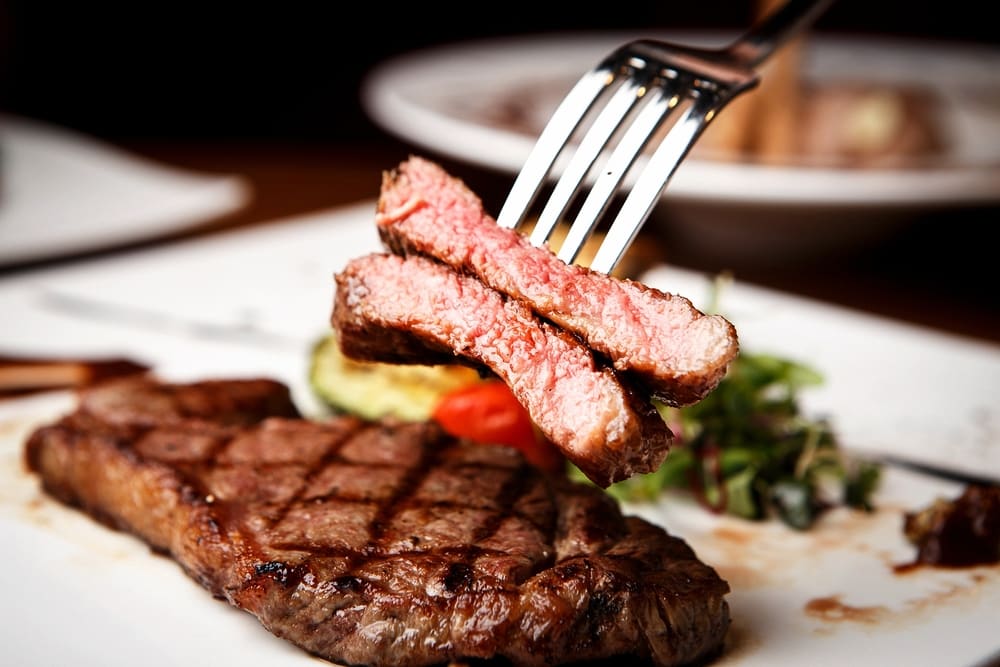
Marinating your cut of meat (rib eye, beef round, sirloin, etc.) is a great way to enhance its flavor profile, and sometimes the marinade can tenderize it a little bit as well.
A piece of meat is made up of muscle fibers, protein, and fat. More fat means more marbling, which translates into a juicier tenderer piece of meat. Whereas more muscle fibers mean less fat and less marbling, which translates into a tougher drier piece of meat.
People think that a simple marinating process will tenderize their cheap cuts of meat. While it’s true, the tenderization ratio is still a lot less than what people might expect. Why? Well, because of your marinade, what it contains, and what your meat contains.
A classic steak marinade is made up of five key ingredients, oil, sugar, salt, acid, and some type of flavoring. Your meat, on the other hand, is connective tissue, muscle fiber, protein, fat, and 75 percent water.
Water and oil don’t mix well together. Similarly, muscle fibers and connective tissues make it difficult for your marinade to penetrate past the surface of the steak. As a result, you’re left with a slightly tender steak with marinated flavors.
There are two ways to tenderize your meat, dry-aging and piercing/poking. Here in this article, we will talk about piercing and answer the question, should you pierce your steak before marinating?
Should You Pierce Steak Before Marinating?
Steak piercing/poking
When asked about piercing/poking, some people who will answer you with a resounding NO, and some other people will tell you to pierce your steak. Who is giving you the right advice?
Piercing or no-piercing is dictated by two things, steak quality and degree of doneness.
Good steak
Good steaks are meat cuts with high-fat content, meaning the connective tissues are loose and muscle fiber ratio is less than usual. Meat cuts like ribeye and short loin that have a good amount of fat marbling are called good cuts of meat or good steaks.
Good steaks are already extremely tender and juicy. So covering with a simple marinade is enough to make a good steak deliver its maximum potential. Because piercing a good well-marbled steak is going too far, it’s in simple terms an overkill.
The meat texture is also a key element that enhances the steak eating experience. Piercing a good steak will result in a falling apart steak with no texture.
Tough steak
Meat cuts like beef round and sirloin that have little to no marbling are called tough steaks, cheap steaks, or low-quality steaks. The muscle fibers in cheap steaks make them hard to chew, a marinade has acid that loosens the fibers by dissolving the connective tissues. Piercing not only breaks the muscle fibers, but it also creates more space for the marinade to work its magic.
So piercing a cheap streak is necessary to enhance the steak eating experience.
Degree of doneness
Piercing a steak allows surface bacteria to reach the internal parts of your steak. Before piecing all you had to do was rapidly heat the surface area which killed the bacteria and cooked you a perfect medium-rare steak. After piercing it’s extremely important to cook the entire steak, meaning no more medium-rare steaks.